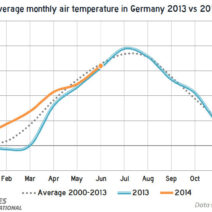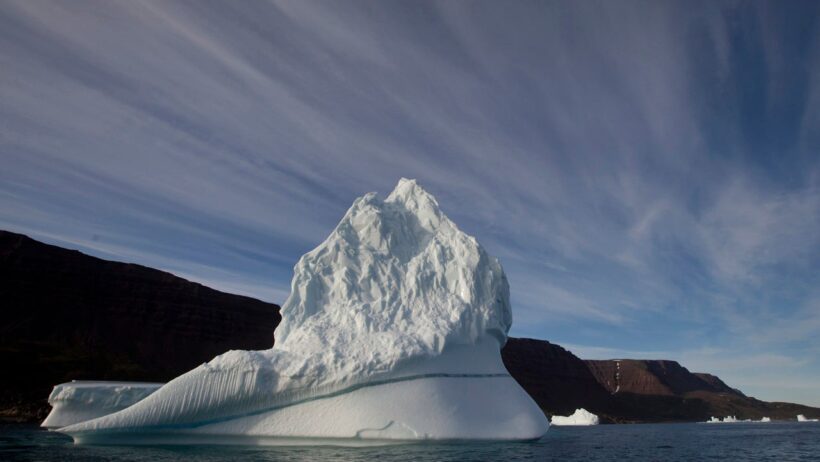The phenomenon of global warming, primarily attributed to human activity, has garnered considerable attention over the last few decades. However, an intriguing aspect of our planet’s dynamics is the axial wobble, or axial precession, which raises the question: does this natural variability influence global warming? Understanding the axis wobble requires a basic familiarity with Earth’s orientation in space, its impact on climate, and the differentiation between natural fluctuations and anthropogenic effects.
The Earth’s axis is tilted 23.5 degrees from the perpendicular to its orbital plane. This tilt is responsible for the seasonal changes we experience throughout the year. However, the axis itself is not static; it wobbles over time due to gravitational interactions. This wobble, called precession, occurs over a cycle of approximately 26,000 years and affects the distribution of solar energy received by various regions on Earth.
At first glance, one might consider the axis wobble as a significant contributor to climate change. Indeed, paleoclimatic data suggests that axial variations can result in substantial climatic shifts over millennia, manifesting as glacial and interglacial periods. However, it is essential to clarify that the contemporary phenomenon of global warming is predominantly driven by human activities, chiefly the burning of fossil fuels, deforestation, and industrial processes that elevate greenhouse gas concentrations in the atmosphere.
The relationship between the Earth’s axial wobble and climate can be divided into short-term and long-term impacts. Long-term, slow shifts in the axial tilt and precession influence climatic patterns and are part of the Milankovitch cycles, which govern glacial and interglacial intervals. This complex interaction involves eccentricity, axial tilt, and precession. While these cycles may dictate the timing of the onset of glacial periods, they operate over geological timescales and are not responsible for the rapid warming observed in recent times.
In contrast, the short-term effects of axial wobble are negligible in the context of current global warming. The current rate of climate change, characterized by rising global temperatures, ocean acidification, and increased frequency of extreme weather events, outpaces natural variability. The Intergovernmental Panel on Climate Change (IPCC) attributes recent climate changes overwhelmingly to anthropogenic factors, dismissing the axis wobble as a principal player in contemporary warming trends.
Moreover, it is pertinent to investigate potential misconceptions surrounding the misconception of axial wobble as a remedy for global warming. While natural cycles, including those induced by axial changes, do have their role in Earth’s long-term climate system, they exhibit minimal influence in our present-day context. The theories suggesting that a shift in the axis could revert warming simply fail to recognize the immediacy of human-induced emissions and their detrimental effects on the atmospheric composition.
Another aspect worth exploring is the interaction between axial wobble and climate feedback mechanisms. The feedback loops that exacerbate warming, such as ice albedo feedback and the release of greenhouse gases from melting permafrost, are wholly driven by current global warming trends. As ice sheets and glaciers retreat due to rising temperatures – largely a result of human-induced climate change – these feedback processes can catalyze a further rise in global temperatures. Thus, while the axial wobble has its significance in the natural climate system, it does not provide the insouciance some may seek regarding the human-driven climate crisis.
Skeptics of anthropogenic climate change sometimes cite historical instances of natural climate variability, leveraging them as arguments against the urgency to mitigate emissions. Understanding the duality of natural and anthropogenic influences on climate can help illuminate misconceptions. It is crucial to discern that, while Earth’s natural processes contribute to long-term climatic patterns, the current episode of rapid warming deviates substantially from historical precedent and cannot reasonably be attributed to natural variability alone.
As scientists continuously gather and analyze data, the consensus has solidified around the reality of human-caused climate change. Indicators such as atmospheric carbon dioxide concentrations measured at Mauna Loa Observatory illustrate a concerning upward trajectory associated with industrialization. These data corroborate the urgency of addressing fossil fuel reliance, habitat destruction, and carbon emissions. Innovative technologies in renewable energy, carbon capture, and sustainable agriculture offer pathways toward reversing our warming trajectory.
It is vital for advocates, policymakers, and individuals alike to recognize the broader context. While Earth’s axial wobble plays a part in long-term climatic patterns, the alarming climate changes of the present day are primarily the product of human activities. The distinction is not simply academic; it drives the imperative for immediate and decisive action to avert detrimental ecological and social impacts.
In conclusion, the question of whether the axis wobble really causes global warming can be answered definitively in the negative. While Earth’s natural oscillations are fascinating and undeniably impactful over extensive timescales, they are overshadowed by the urgent and profound climatic consequences of anthropogenic actions. Engaging in climate discourse requires clarity about these distinctions. Tackling the existential threat of climate change mandates a collective commitment towards significant reductions in greenhouse gas emissions, fostering resilience, informing the public, and implementing sustainable policies that will create a livable future for generations to come.






